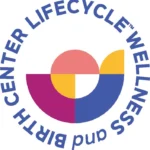May 10, 2022
What Does “Mindfulness” Really Mean?
This post was written by Lifecycle midwife Carol O’Donoghue and Molly Weingrod. Carol and Molly co-teach Mindfulness-Based Childbirth and Parenting. Keep reading to learn more about what “mindfulness” really means and how you can begin to manifest it in your life.
“Mindfulness” is a word we see a lot these days. The author of a recent article I read about mindfulness wrote that a January 2022 internet search of the word “mindfulness” yielded almost 3 billion hits (yes that’s billion, with a “b”)!
Many of these articles tout the (literally) tens of thousands of rigorous scientific research articles that (purportedly) assert the benefits of mindfulness practice for a variety of physical and mental ailments, as well as its ability to improve productivity in the workplace, behavior on the schoolyard, and on and on. It’s no surprise, then, that with the word going mainstream, related goods and services promoting mindfulness are prolific and easily accessible, too.
We are not here to tout the benefits of mindfulness. The last thing any of us need is a reminder of something more we should be doing in the service of self-improvement. What’s more, from the perspective of mindfulness, there is nothing to improve!
Here, we’re interested in looking at what mindfulness practice really is, and how it might manifest in our lives – particularly around the journey of pregnancy and parenting.
Mindfulness practice invites us to intentionally direct our attention to the present moment, to the here and now, and to be with what arises there. And things are always arising! We have a body, which senses, and a mind, which thinks. We are constantly sensing, feeling, thinking.
When we sit with those realities, we sometimes discover things of which we hadn’t been aware: that pain in our lower back, perhaps; those constant judgments of what others are saying; our frustration with the weather, or anticipation of the next season. We might find that we compare ourselves to our friends, neighbors, or even to our former selves. Or perhaps we just become aware of that thing we wanted to add to our shopping list. It goes on, infinitely.
Is it wrong that we judge, compare, or prepare? Is there something wrong with us not liking our pain or discomfort? Not at all, from the perspective of mindfulness. These mind and body states are just part of being human. So, too, is the awareness of pleasure or joy or delight, but without awareness, we may be missing out on those pieces of our experience, too.
With mindfulness practice, then, we might be able to experience the body at rest instead of in active doing, or the mind in a state of observation, instead of evaluation. We might notice that our body actually reacts when recalling a moment of connection with our partner, child or pet, and what happens to us. We might notice the lower back pain while at the same time noticing the many parts of the body that are not in pain. We can become acquainted and intimate with the patterns of our own minds. We can find space to pause, watch, and respond to our experience with, well, awareness.
The practice of sitting with whatever arises turns out to be particularly useful in pregnancy and birth. Pregnancy is a period of constant transformation of the body, with all its new sensations and accommodations.
Birth is an intense experience and so much rises: a gamut of feelings, thoughts, and physical sensations. Neither is it an experience one can escape. If you run, pregnancy finds you; if you try to escape, birth pulls you back. No matter how you conceive, grow, or birth your baby, the experience is transformational — you become a parent. And that transformation is, hands down, one of the most provocative changes we have the chance to experience.
Mindfulness practice asks us to pay attention to what is happening in the present moment. To be with our experience, no matter what it is – pleasant or unpleasant – knowing that it will change from one moment to the next. This practice couldn’t be more useful than in pregnancy, birth, or in parenting, when the physical, emotional, and mental demands for our attention are many, urgent, and continuous. What better time to cultivate our own awareness than when we are experiencing this profound and mysterious transformation?
A note of warning: any wellness practice that can be helpful can also be potentially ineffective or, at worst, harmful. Sometimes resting in awareness with difficult and painful thoughts and sensations that arise is, well…difficult and painful. Mindfulness is, at its core, a practice of kindness, patience and trust. If you are new to mindfulness, or even if you have a long-standing practice, support in your practice is both protective and rewarding. Practicing with a teacher, mentor, or community is both motivating and beneficial.
Incorporating mindfulness in one’s life takes intention and effort. It’s called a “practice” for that reason. It cannot be acquired, ordered, or consumed. We cultivate it with our attention. We take the time to just stop and be. To sit. To see what is there. It is both delightfully simple and interestingly challenging. We encourage you to give it a try, and see what happens

